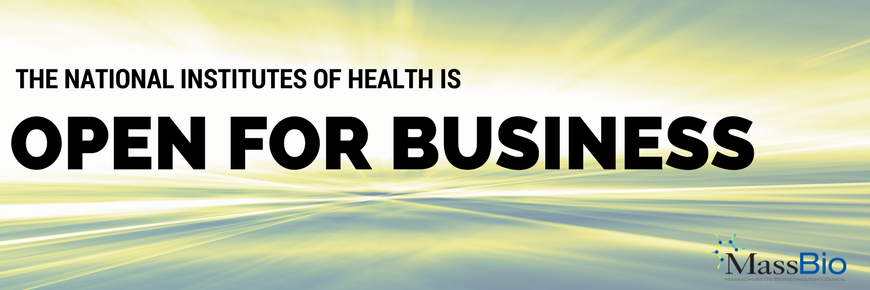
The National Institutes of Health (NIH) is the largest basic science research institute in the world. We are the epicenter for discoveries around the fundamental nature of living things. Our research protects and improves health. We develop drugs. Through our extramural program, we fund research around the world in the causes, diagnosis, prevention, and cure of human diseases; in the processes of human growth and development. With the largest number of hospital beds in the country, patients treated at the Clinical Center receive unique care, available nowhere else, at no cost.
All this is true. But, if this is all you know about NIH, then you don’t know NIH.
NIH’s more than 100 technology transfer professionals help our thousands of researchers – from basic to translational (and yes) to clinical – file patents on their discoveries so that the Bayh-Dole Act of 1980 can help move them towards the patient and – concurrently – towards the marketplace. It is well known that Bayh-Dole related to intellectual property directly resulting from federal government-funded research. It is well known that Bayh-Dole allows for a university, small business, or non-profit to obtain patent rights from such funding. It is not well known that NIH is part of this revolution.
Long thought of as the go-to place for academics to work with a thought-leader and publish in a top-tier journal, NIH’s technology transfer offices are establishing themselves as open for business – as one of the go-to places for the healthcare industry to work with a thought-leader, overcome a technology or knowledge gap, and get their products to market. Translational and clinical innovators across 27 Institutes and Centers cover nearly every disease and disorder imaginable – and marketable. We develop drugs – as well as devices, diagnostics, wearable and digital health solutions, and software.
We are not merely the largest provider of direct support in the world – almost $30B this fiscal year. We are the largest provider of in-kind support in the world. Research tools – mice, cell lines, antibodies – are provided at little or no cost. Our largest clinical center in the world? We work with companies to run dozens of clinical validation studies where each side pays its way. When it comes to being competitive, there are thousands of technologies available for licensing that require little or no up-front equity. Our royalty rates compare favorably with the other world-renown places; as a federally funded agency, we seek fair market value – not maximum returns. An array of cooperative agreements is successfully executed at a rate of more than ten a day.
Look again at our mission statement. Surprise: it includes accelerating and promoting economic development. That means working with companies to positively impact your chances as an equity investment, an M&A target, an active employer. We might not be the first place your company thinks of to bolster their pipeline or solve that development problem – but perhaps we should be.
Guest postings on the MassBio blog in no way represent the opinions or endorsement of MassBio or its officers, directors, employees, agents, and consultants. MassBio does not represent or guarantee the truthfulness, accuracy, or reliability of statements or facts posted under the Guest postings on the MassBio blog. MassBio accepts no liability for errors, omissions or representations. The copyright of guest content belongs to the author and any liability with regard to infringement or intellectual property remains with the author.